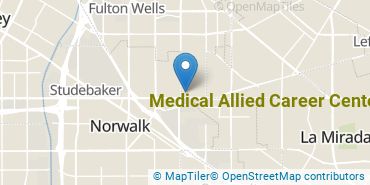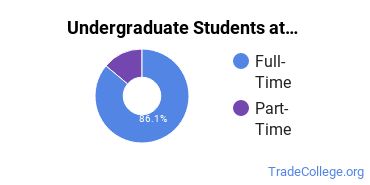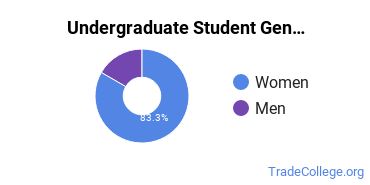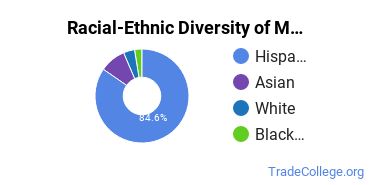Medical Allied Career Center Trade Programs
Medical Allied Career Center is a private for-profit institution located in Santa Fe Springs, California. Medical Allied Career Center is located in a safe and convenient suburb.
Featured schools near , edit
Where Is Medical Allied Career Center?

Contact details for Medical Allied Career Center are given below.
| Contact Details | |
|---|---|
| Address: | 12631 East Imperial Highway Bldg D-108, Santa Fe Springs, CA 90670-4710 |
| Phone: | 562-807-2420 |
| Website: | www.medicalallied.edu |
Can I Afford Medical Allied Career Center?
Student Loan Debt
Almost 66% of college students who graduated with the class of 2018 took out student loans, but that percentage varies from school to school. At Medical Allied Career Center, approximately 84% of students took out student loans averaging $7,795 a year. That adds up to $31,180 over four years for those students.
Medical Allied Career Center Undergraduate Student Diversity

Gender Diversity
Of the 68 full-time undergraduates at Medical Allied Career Center, 18% are male and 82% are female.

Racial-Ethnic Diversity
The racial-ethnic breakdown of Medical Allied Career Center students is as follows.

| Race/Ethnicity | Number of Grads |
|---|---|
| Asian | 6 |
| Black or African American | 4 |
| Hispanic or Latino | 56 |
| White | 2 |
| International Students | 0 |
| Other Races/Ethnicities | 0 |
Medical Allied Career Center Trade School Concentrations
The table below shows the number of awards for each concentration.
| Major | Basic Certificate | Undergraduate Certificate | TOTAL |
|---|---|---|---|
| Licensed Practical/Vocational Nurse Training | 0 | 24 | 24 |
| Nursing Assistant/Aide and Patient Care Assistant/Aide | 6 | 0 | 6 |
| TOTAL | 6 | 24 | 30 |
References
*The racial-ethnic minorities count is calculated by taking the total number of students and subtracting white students, international students, and students whose race/ethnicity was unknown. This number is then divided by the total number of students at the school to obtain the racial-ethnic minorities percentage.
More about our data sources and methodologies.
Featured Schools
 Request Info
Request Info
|
Southern New Hampshire University You have goals. Southern New Hampshire University can help you get there. Whether you need a bachelor's degree to get into a career or want a master's degree to move up in your current career, SNHU has an online program for you. Find your degree from over 200 online programs. Learn More > |
